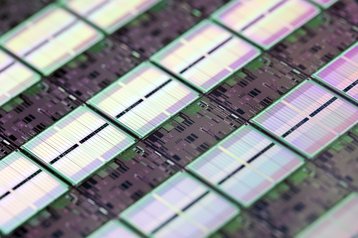Western Digital subsidiary HGST and networking specialist Mellanox are working together to develop a networking architecture for Phase Change Memory (PCM) - a new memory type that can scale better than traditional DRAM, while consuming less power.
PCM is especially suitable for in-memory computing but can be used for high-performance storage, able to deliver speeds that beat current generation flash by several orders of magnitude.
The partners demonstrated a Remote Direct Memory Access (RDMA) based in-memory compute cluster at the Flash Memory Summit in Santa Clara, California.
“To truly shake up the economics of the in-memory compute ecosystem will require a combination of networking and storage working together transparently to minimize latency and maximize scalability,” said Kevin Deierling, VP of marketing at Mellanox.
“With this demonstration, we were able to leverage RDMA over InfiniBand to achieve record-breaking round-trip latencies under two microseconds.”
Last year at the same event, HGST presented a PCM system that produced three million IOPS – a record for non-volatile storage.
New phase
In-memory computing is growing in popularity, since current generation DRAM helps obtain more I/O performance from a server than any type of non-volatile storage. This approach is especially valued in analytics. Gartner predicts that the revenue of in-memory computing software market alone will exceed US$9 billion by the end of 2018.
The arrival of PCM could grow the market even further by offering memory that’s cheaper and less power-hungry than DRAM, while being faster and more durable than flash.
With DRAM, memory needs to be rewritten several times per second to stave off data loss, resulting in power consumption that constitutes as much as 30 percent of the overall server power draw. While having similar performance characteristics, PCM is non-volatile – which means data can be written once and stored for extended periods of time, even when the server is switched off.
HGST has collaborated with Mellanox to develop a persistent memory fabric to go along with PCM which does not require BIOS modification or rewriting of applications. This fabric uses RDMA protocol over Ethernet or InfiniBand, enabling deployment of in-memory databases at previously unimaginable scale.
The two companies demonstrated a networked memory system that delivered access latencies of less than two microseconds for 512B reads, and throughput exceeding 3.5 GB/s for 2KB block sizes.
“Last year our Research arm demonstrated Phase Change Memory as a viable DRAM performance alternative at a new price and capacity tier bridging main memory and persistent storage,” said Steve Campbell, CTO at HGST.
“To scale out this level of performance across the data centre requires further innovation. Our work with Mellanox proves that non-volatile main memory can be mapped across a network with latencies that fit inside the performance envelope of in-memory compute applications.”
IBM and Intel are also working on PCM. Last week, Intel and Micron announced yet another type of non-volatile memory, 3D XPoint, that they say is up to 1000 times faster and more durable than flash.

